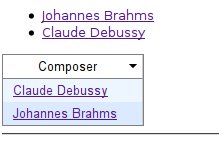Some links to stuff I’ve either read or plan to read which I think is interesting:
Python is not Java, tips for Java programmers starting w/ Python:
http://dirtsimple.org/2004/12/python-is-not-java.html
Python for Bioinformatics:
http://www.pasteur.fr/recherche/unites/sis/formation/python/index.html
BioPython:
http://biopython.org/DIST/docs/tutorial/Tutorial.html
I need to know Selenium better, it’s possible that I might consider using it for a project I might be working on (that sounds like it might have some UI bugs/issues/problems):
http://seleniumhq.org/
10 things every programmer should read (this will take a while to wade through):
http://blog.objectmentor.com/articles/2009/02/26/10-papers-every-programmer-should-read-at-least-twice
Xen Cluster Mgt using Ganeti for Debian Lenny:
http://www.howtoforge.com/xen-cluster-management-with-ganeti-on-debian-lenny
Ganeti admin guide and install guide:
http://ganeti-doc.googlecode.com/svn/ganeti-1.2/admin.html
http://ganeti-doc.googlecode.com/svn/ganeti-1.2/install.html
David Byrne (of Talking Heads) interviews Thom Yorke (of Radiohead):
http://www.wired.com/entertainment/music/magazine/16-01/ff_yorke?currentPage=all
With a great quote, that shows how well the record companies treat their performing artists (that’s sarcasm in case you don’t have a sense of humour). First Radiohead made zip/zilch/nada from EMI sales of digitized versions of their music:
Yorke: In terms of digital income, we’ve made more money out of this record than out of all the other Radiohead albums put together, forever — in terms of anything on the Net. And that’s nuts. It’s partly due to the fact that EMI wasn’t giving us any money for digital sales. All the contracts signed in a certain era have none of that stuff …
Yorke: … It’s about whether the music affects you or not. And why would you worry about an artist or a company going after people copying their music if the music itself is not valued?
Then he talks about how the music iteself isn’t valued, but the business processes surrounding the marketing and selling of music:
Byrne: You’re valuing the delivery system as opposed to the relationship and the emotional thing…
Yorke: You’re valuing the company or the interest of the artists rather than the music itself. I don’t know. We’ve always been quite naive. We don’t have any alternative to doing this. It’s the only obvious thing to do.
